A weeping cherry tree can become tall and wide. It can take up space in your garden lot or yard. You might want to relocate the tree to another area but feel unsure about how to go about it. We have researched relevant information to help you move the tree.
You can remove a weeping cherry tree by following the steps below:
- Dig a hole on a new site with enough size for the tree's existing roots.
- Excavate around the tree.
- Transfer the tree immediately after digging.
- Add backfill with soil.
- Water the soil.
- Add two inches of mulch on the edge of the tree's canopy.
You should be cautious when removing the tree. When digging, try to avoid severing the roots and exposing them to the air for a long period of time. Read further to learn more about the process of removing a weeping cherry tree.
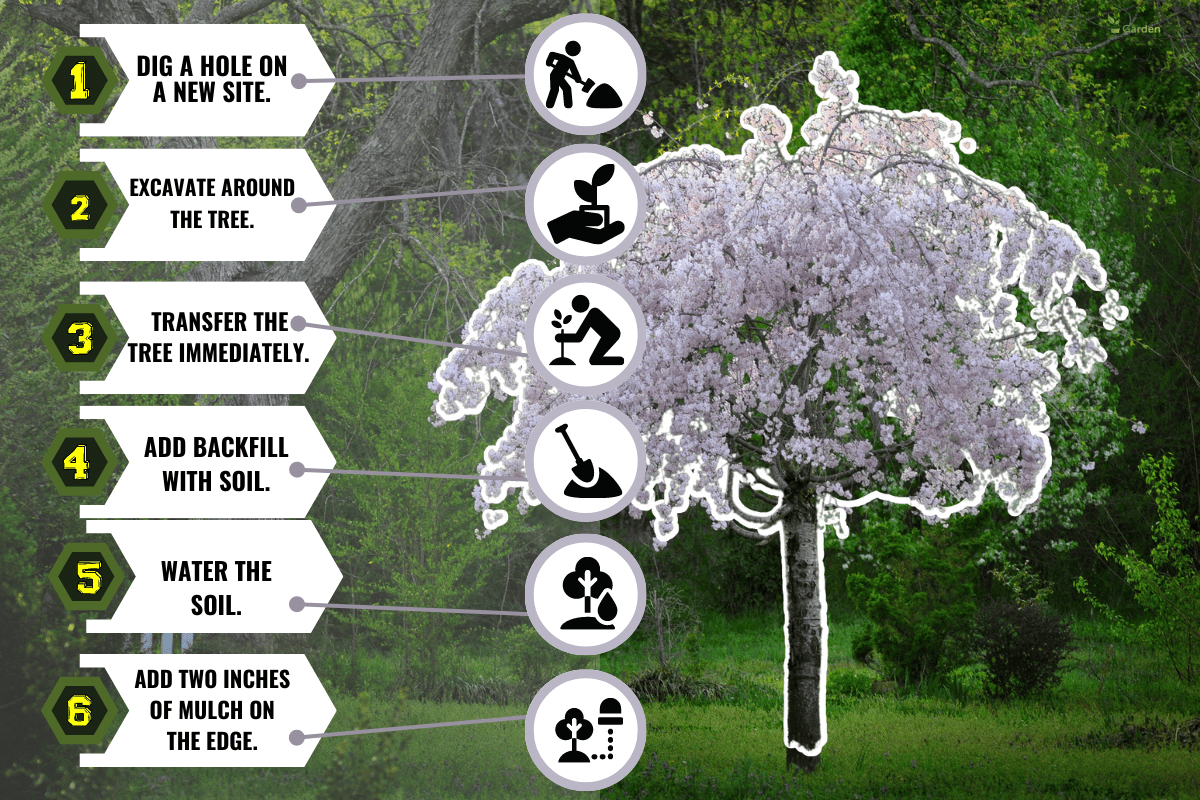
Removing A Weeping Cherry Tree
A weeping cherry tree is a delightful ornamental tree with pink flowers on its low-sweeping branches. Its beauty is a great addition to gardens. The tree varies in size, from full to dwarf.
A full-sized weeping cherry tree can grow 20 to 25 feet tall and wide, while the dwarf variety is a half or a third of the full size. Different varieties will differ in size.
Due to its size, you may not have enough trees or plants to grow in your garden. You might want to move the tree because you are creating a driveway or a patio. Whatever the reason, removing a weeping cherry tree is possible.
If you have a young tree, you might want to relocate it to a new site. The tree might be too close to your house once it matures. The tree's distance from the house or any other structure should be at least 10 feet.
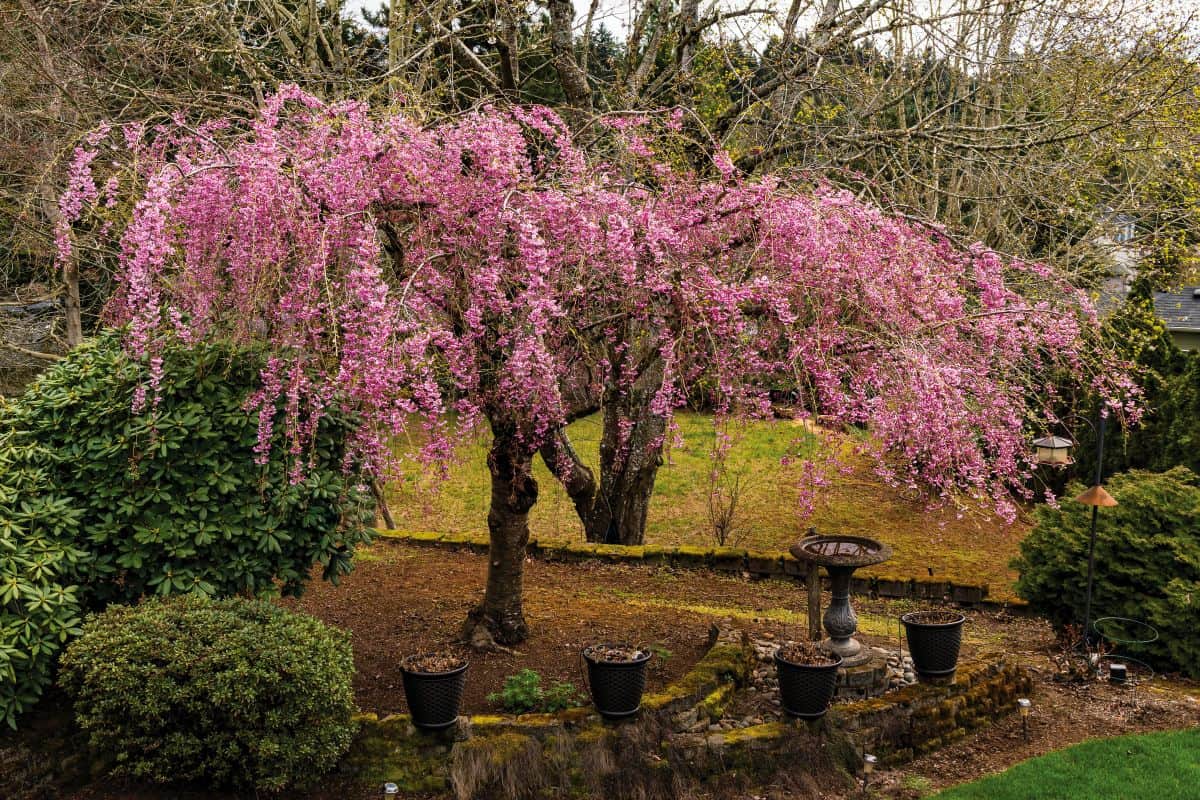
You can remove a weeping cherry tree by following the process below:
- Find a new location in your garden and dig a hole on the site with enough room for the existing roots. The hole must be as deep as the root ball and two to three times as wide.
- Excavate around the tree. Carefully dig starting from the dripline to the trunk. Dig from an angle towards the trunk and under the root ball. Avoid severing the big, mature roots.
- Transfer the tree immediately after digging. Try not to expose the roots to cold, dry air.
- Add backfill with soil. Tamp the soil down to remove any air pockets.
- Water the soil so that it is moist, not soggy. Soggy soil can lead to root rot.
- Add two inches of mulch at the edge of the tree's canopy. The mulch will keep the soil moist.
Follow the process carefully to keep the tree growing on the new site.
What Soil To Use For A New Plant Site
A weeping cherry tree needs loamy, moist, well-draining soil. The soil must be acidic and fertile. If your garden site has sandy soil, add compost to make it acidic. Add pumice or perlite to increase draining capacity.
After transplanting the tree, keep the soil moist but not soggy. Provide enough water to trickle down to the roots, but keep the soil dry after watering to prevent root rot.
You can keep the soil healthy by adding slow-release fertilizers to provide nutrients to the tree.
What Is The Best Time To Relocate The Tree?
You can transplant the tree when it is dormant during early spring or late fall. The right time is when the last leaves and flowers have fallen off. Avoid transplant shock by adding water to the new plant site before and after removal.
If your tree is still dormant when you remove it, continue watering it until the roots begin growing.
You can nurture the tree's growth and prevent disease by transplanting it at the right time.
When Shouldn't You Remove A Weeping Cherry Tree?
Although it is possible to remove the tree at any time, there is a specific stage of the tree's life that you should consider. You should not remove the tree during its first year.
If you remove the tree during that time, the branches will grow roots at their bases. When the tree grows, it will not have the normal root system.
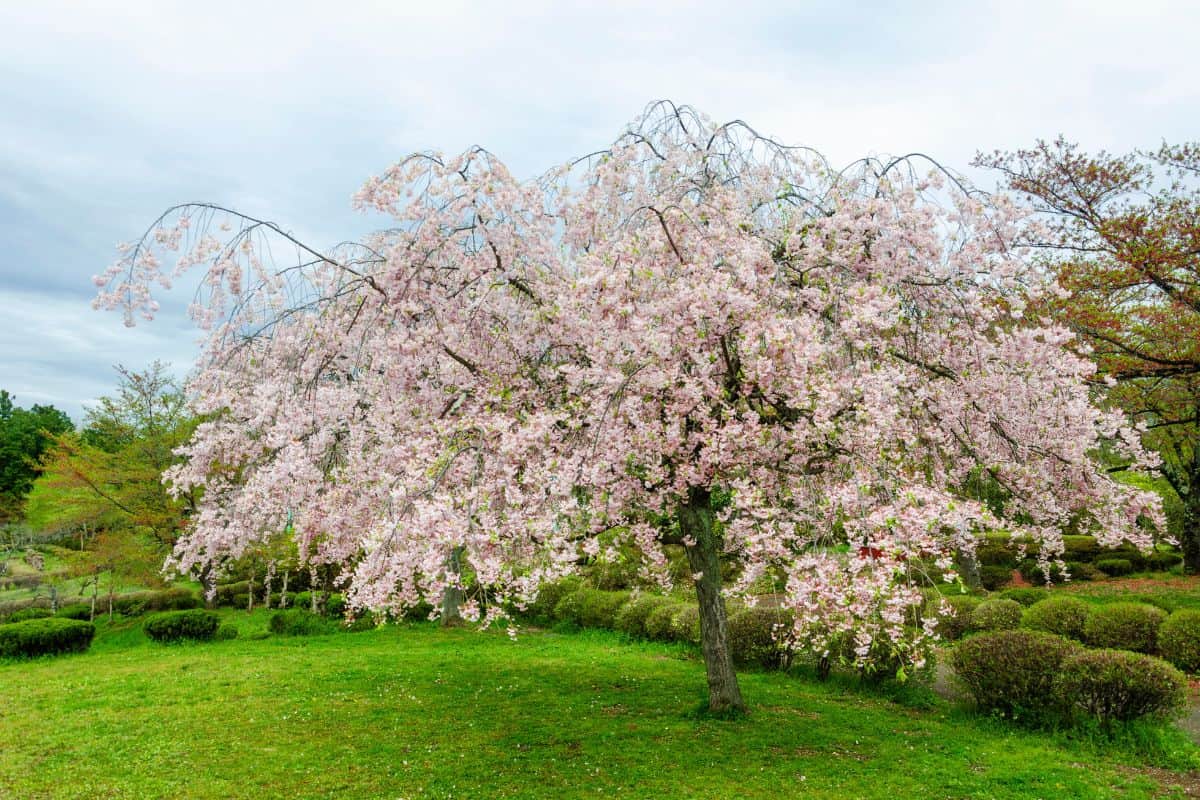
How Deep Are The Roots Of A Weeping Cherry Tree?
The roots of a full-size weeping cherry are two to three feet deep. Dwarf varieties have roots below one to two feet. Deep roots grow into the soil to support the tree's weight while providing it with essential nutrients from the soil.
The roots are not invasive or aggressive. However, as the tree matures, the roots can be destructive if they are near a house or other structure.
During removal, you should be careful with the roots. It's okay if a few small roots are severed, but you should be careful with the roots at all times. Large, mature roots should be safe when removed. Be cautious from digging to transplanting to the new plant site.
Can You Control The Size Of A Weeping Cherry Tree?
It is possible to keep the tree small if you don't have much garden space. The weeping cherry tree needs a wide space to grow. You can reduce the size of the tree by clipping it every season.
If the tree has a severe disease, it is wise to cut up to 1/3 of the tree to save it. If you have a dwarf variety, cutting back the tree will help to keep it healthy.
Can You Cut The Top Off A Weeping Cherry Tree?
You cannot cut the top of the tree off, but you can prune it. Pruning is vital to retain the shape of the tree. By doing so, your tree will grow healthy. Although pruning is good, do not over-prune the tree.
Read this post: Can You Cut The Top Off A Weeping Cherry Tree? to learn more.
How Do You Prune An Overgrown Weeping Cherry Tree?
Pruning is essential to maintain the shape and health of the weeping cherry tree. If you think the tree is too mature, it can be pruned.
The best time to prune is during the dormant season of the tree. Use sterilized pruning tools to avoid contamination.
Before proceeding, you should determine if the tree is natural or grafted. The pruning methods are different for the two types.
Below is the pruning procedure for a natural weeping cherry tree.
- Trim any branches that trail on the ground. Keep the branches at least six inches off the ground.
- Trim diseased, dead, or straggling branches.
- Shape the tree as you trim it, giving it a uniform crown.
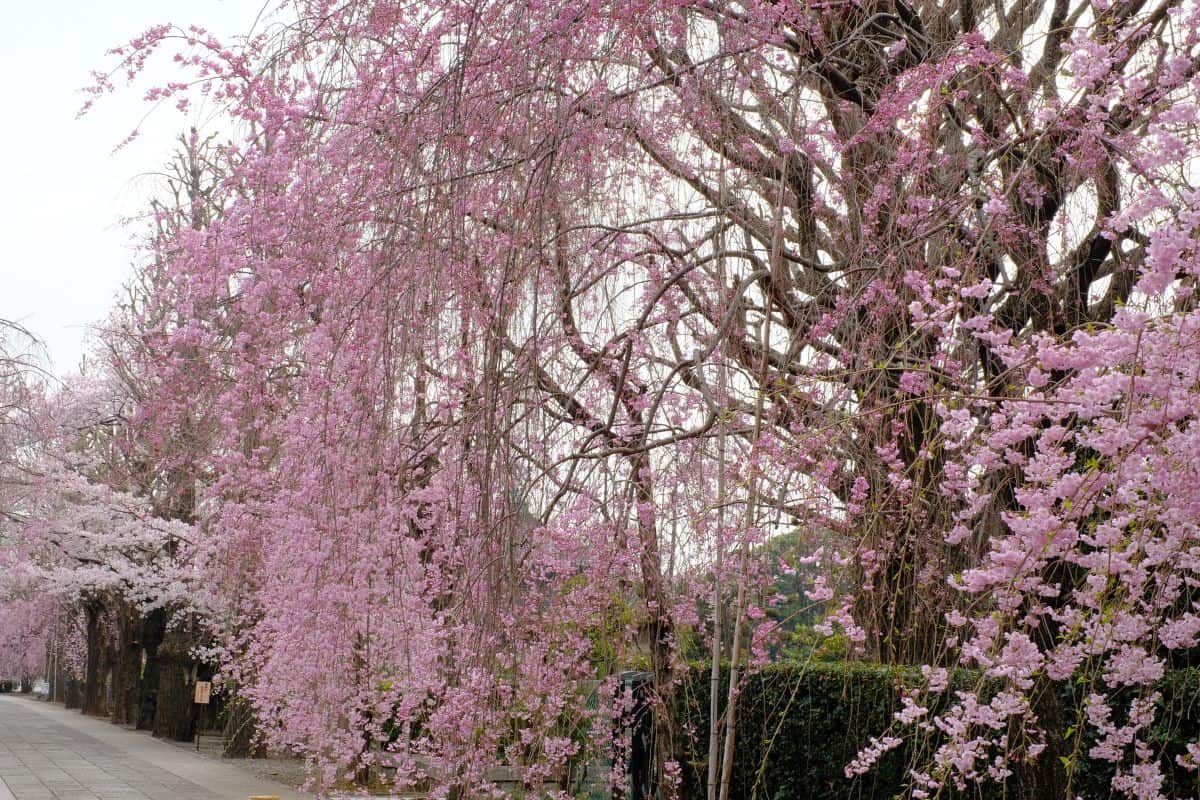
Do not prune the upward-growing branches. These branches are healthy and are important for keeping the tree's shape. Also, you can create a thick canopy if you retain the upward branches.
If you have a grafted tree, the steps above are applicable. Unlike the natural-growing tree, you need to remove the upward branches of the grafted tree.
If you're not sure how to prune the tree, ask a licensed arborist to assist you.
Caring For A Weeping Cherry Tree
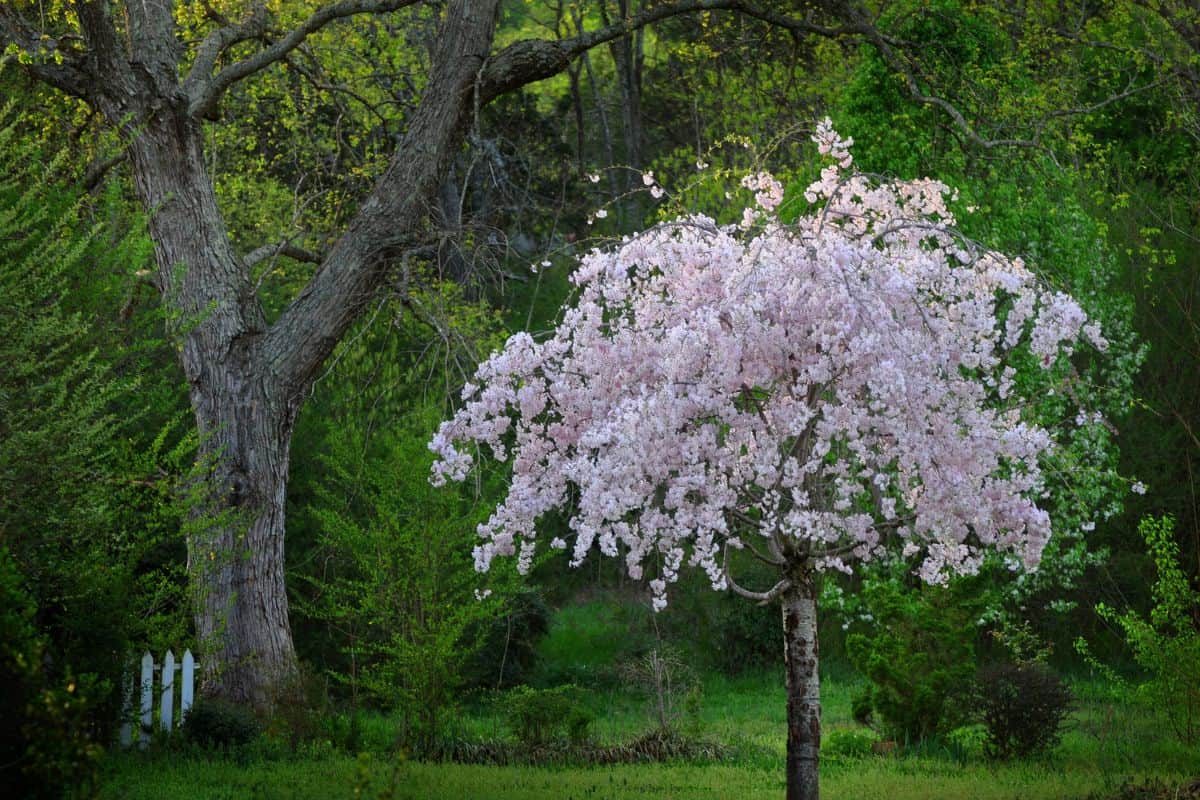
A weeping cherry tree can live for 30 to 40 years. Its lifespan depends on the variety and the care you give it. If you have transplanted the tree, you can keep it growing with the proper maintenance.
You can grow the transferred weeping cherry tree by following these tips:
- Make sure the tree gets six to eight hours of sunlight daily
- Protect the tree from the harsh afternoon sun
- Use a nitrogen-blend fertilizer
- Water the tree one to two times a week, depending on the soil conditions
- Keep weeds away from the tree
- Mulch the new area to keep it moist
With the tips above, you can grow the tree and allow it to bloom beautiful flowers for years to come.
In Closing
You can remove a weeping cherry tree easily by following the proper process. The first thing to do is dig a hole for the transplanted tree.
You should then carefully excavate the tree. Be cautious when digging the roots to avoid severing them and transfer the tree to the new hole. Add backfill and water the soil.
The best time to remove the tree is when it is dormant. Also, you need to ensure that the soil is suitable for the tree. Once the tree is in the new location, provide the proper care so it grows healthy.
If you found this post helpful, check out these related articles:
